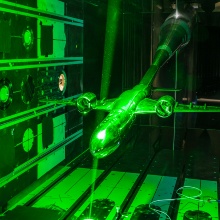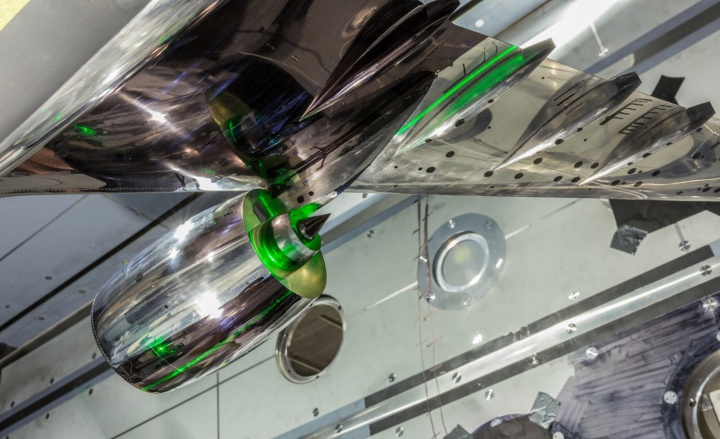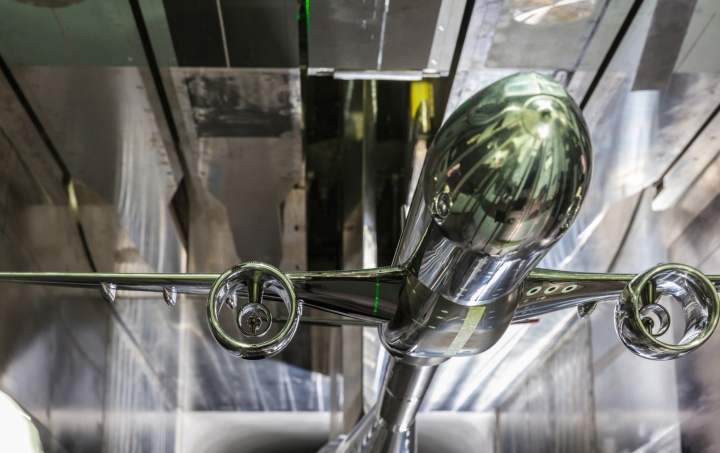The third wind tunnel test in the scope of FOR 2895 was conducted in October 2022. As for the previous campaigns the XRF1 wind tunnel model, provided by Airbus, was investigated within the European Transonic Windtunnel facility in Cologne Germany. The focus of this measurement campaign was on the detailed assessment of unsteady shock boundary layer interaction phenomena occurring in the vicinity around the newly installed UHBR nacelles.
The test campaign was divided into two parts. The first test dealt with the investigation of the model with a surface pressure measurement technique already used in previous campaigns, namely PSP (pressure sensitive paint). In the second part, the shock boundary layer interaction phenomena were measured in the volume around the aircraft using PIV (particle image velocimetry). In these PIV measurements, ice crystals were generated in the wind tunnel and illuminated by a laser in the test section. Using special cameras images of the laser sheet are recorded allowing to reconstruct the flow field around the model in the illuminated plane.
In the conception of the test, it was possible to draw on the valuable data and experience gathered during the previous measurement campaigns. To investigate shock boundary layer interactions this time not only the wing but also the nacelle was coated with PSP paint and measured in detail. By using two synchronized high-speed cameras, one for the wing and one for the nacelle, unsteady PSP measurements could be performed simultaneously, allowing to check the phenomena on wing and nacelle for temporal correlation in post processing.
The PSP measurements were performed in a Reynolds number range between 3.3M and 12.9M at temperatures between 300K and 180K. For the two Mach numbers 0.84 and 0.90, angle-of-attack ranges were selected that specifically allow the investigation of shock-boundary layer interactions on the wing lower side and the nacelle.
Based on simulations and initial results from the previous MK2A measurement campaign, planes were defined that were investigated using the PIV technique. These planes were then illuminated with a fanned out laser section and measured as previously described. Since the PIV system uses ice crystals as particles, the use of this measurement technique was not possible for the smallest Reynolds number of 3.3M. The latter is only achievable in ETW at the highest temperature level of 300K for technical reasons. Therefore, the PIV measurements could only be performed for a selection of measurement conditions at Re=6.6M and 12.9M.
The measurement campaign was successfully completed on 21.10.2022. A detailed data set of surface pressure measurements as well as volumetric velocity fields now allows the researchers to analyze the unsteady effects caused by the installation of the UHBR nacelle to an unprecedented extent. The measured data will also serve as important validation data for complex simulation approaches in which the phenomena will be calculated.




